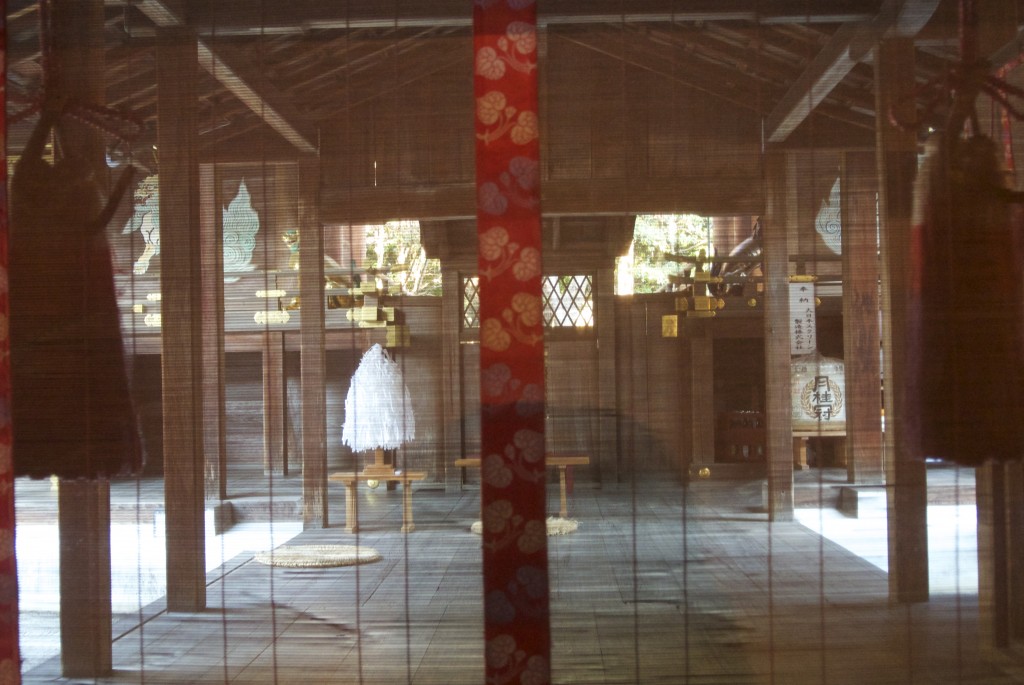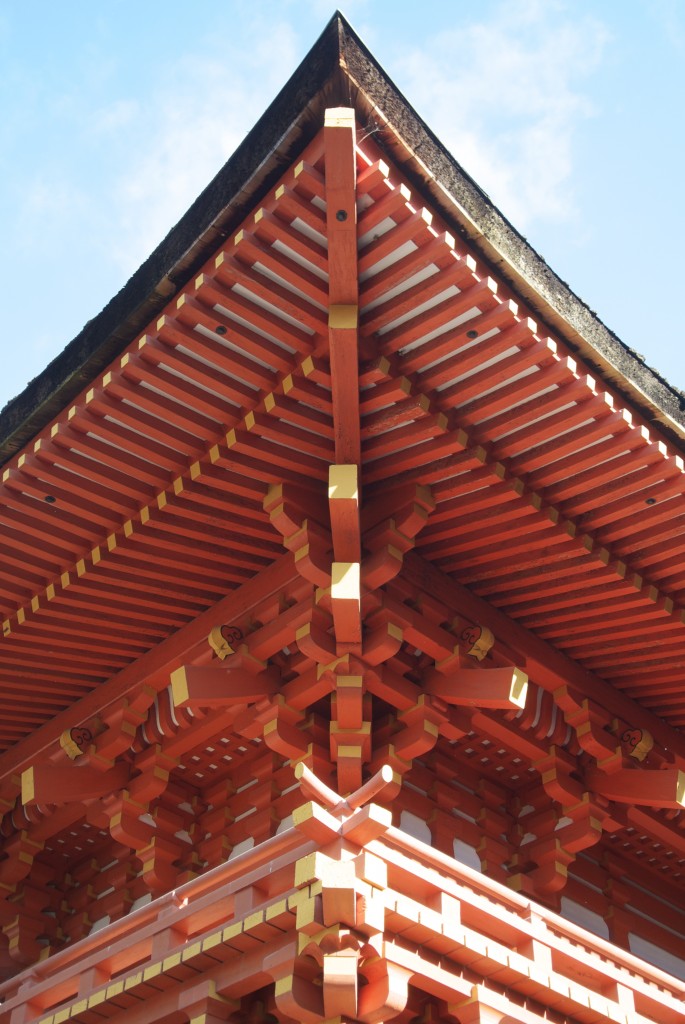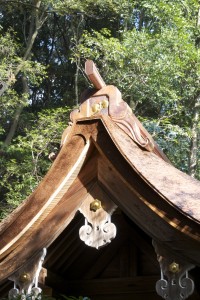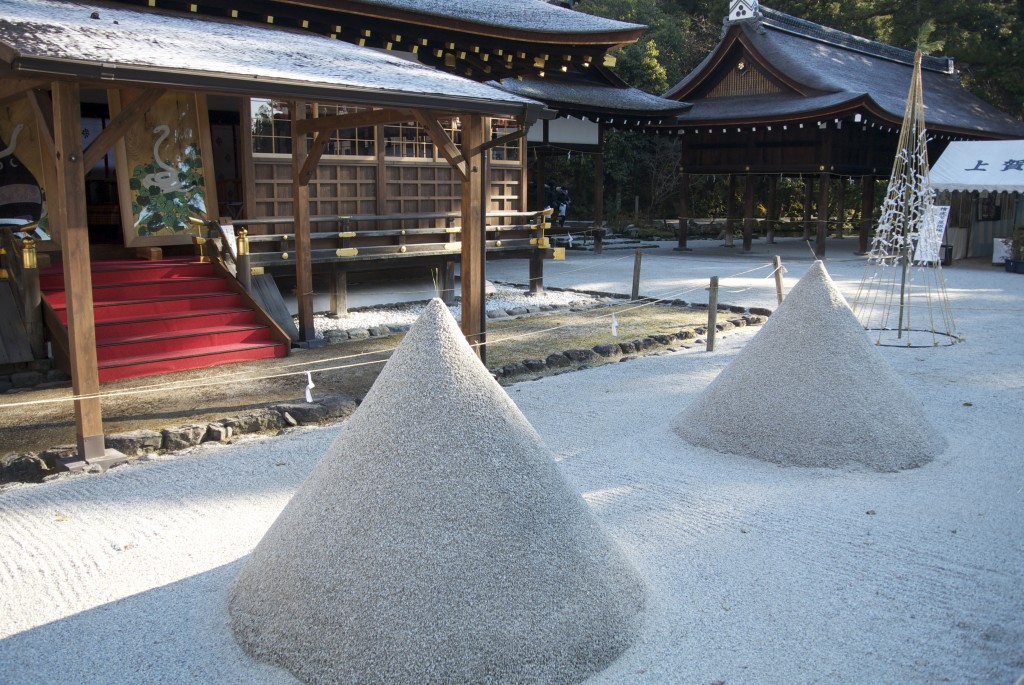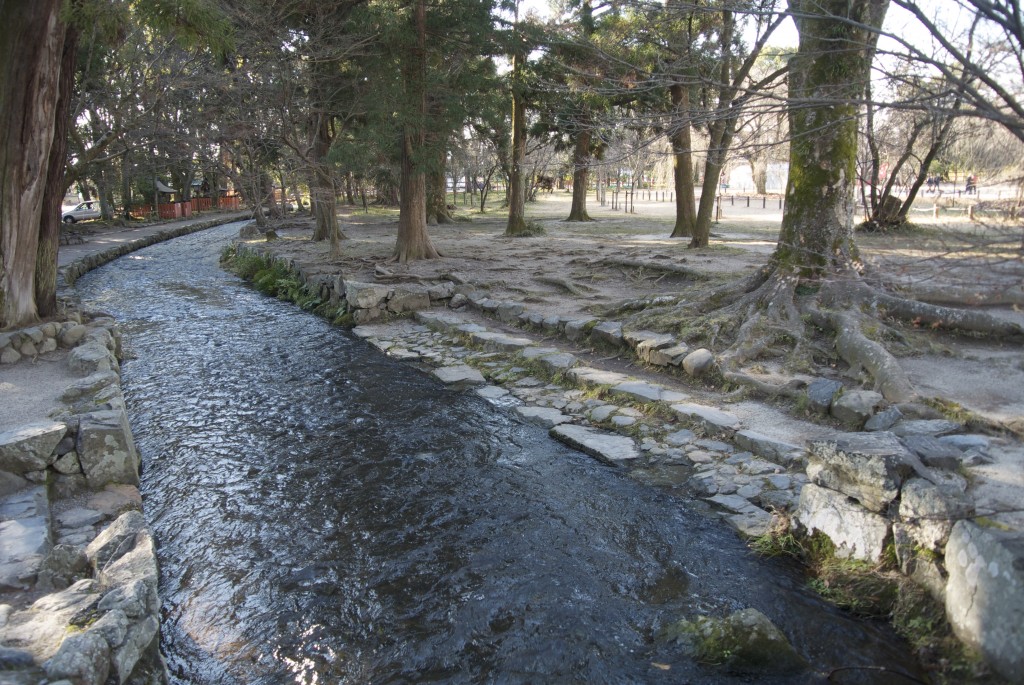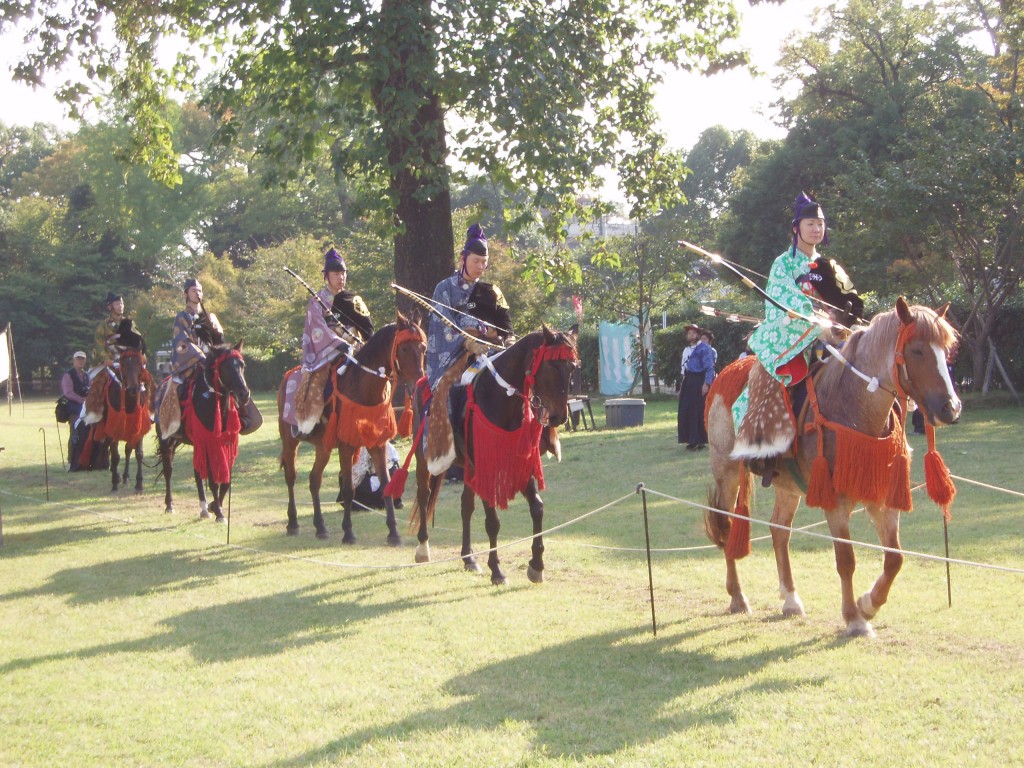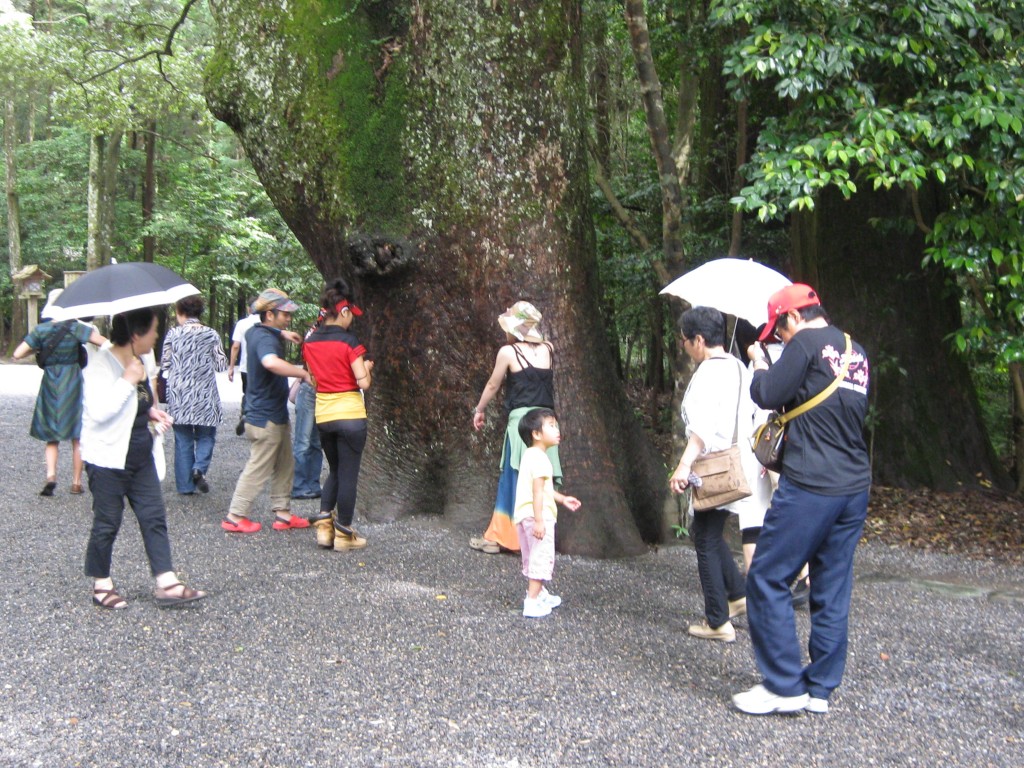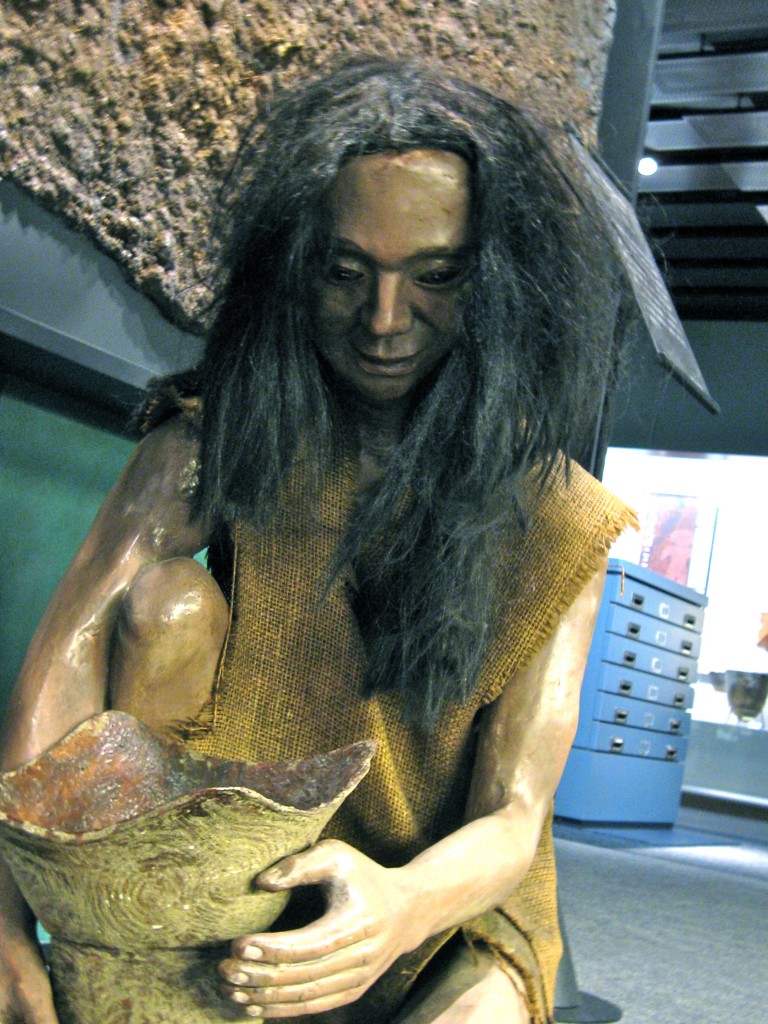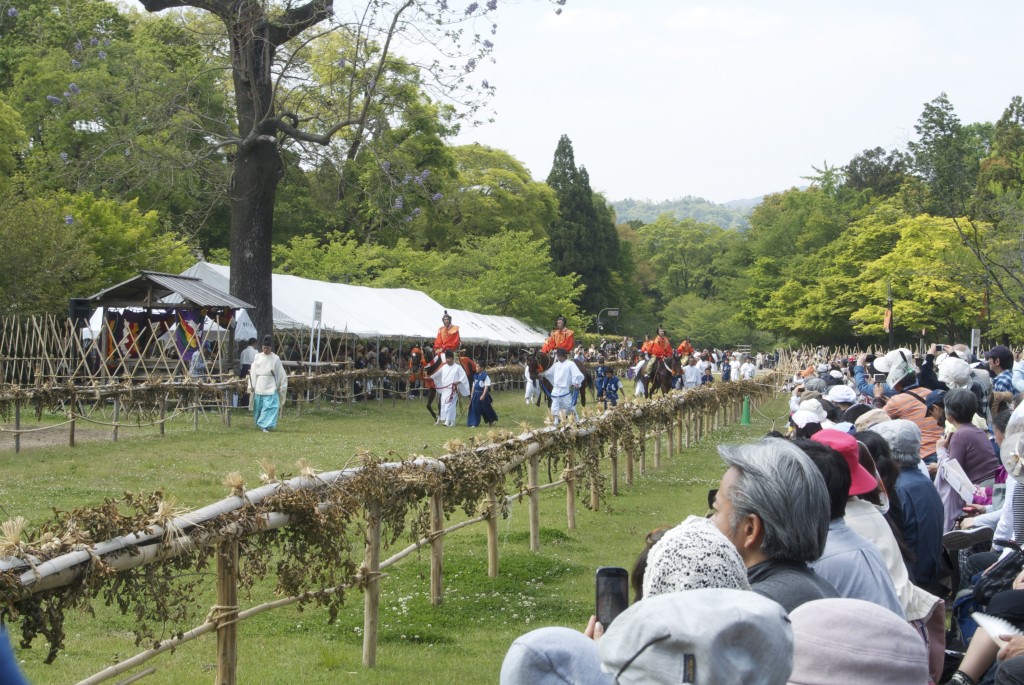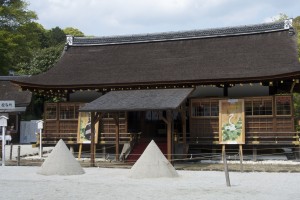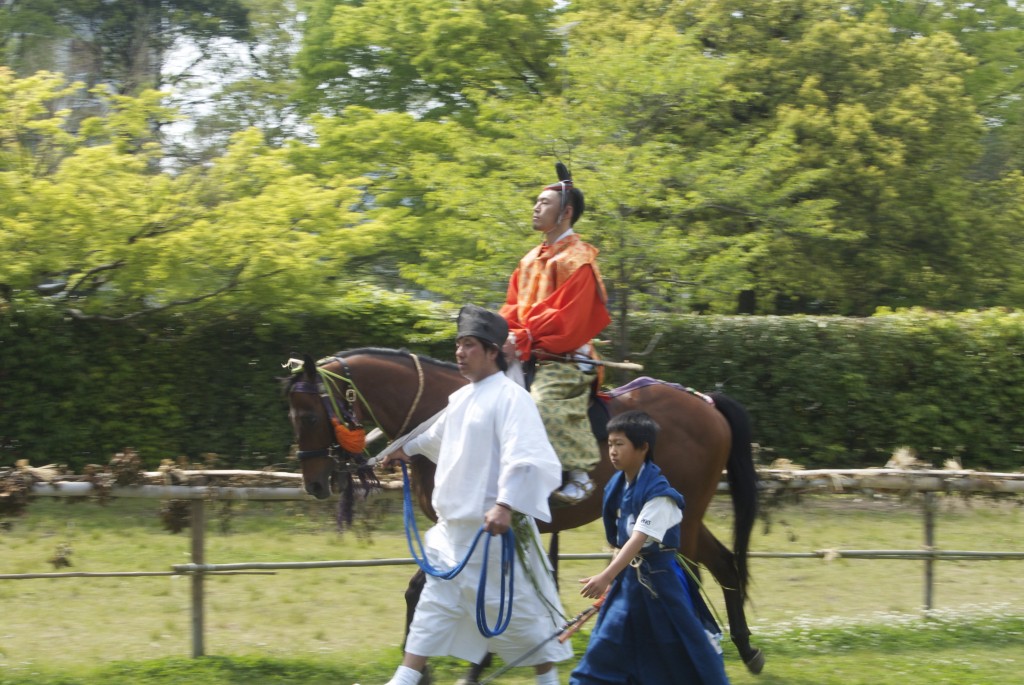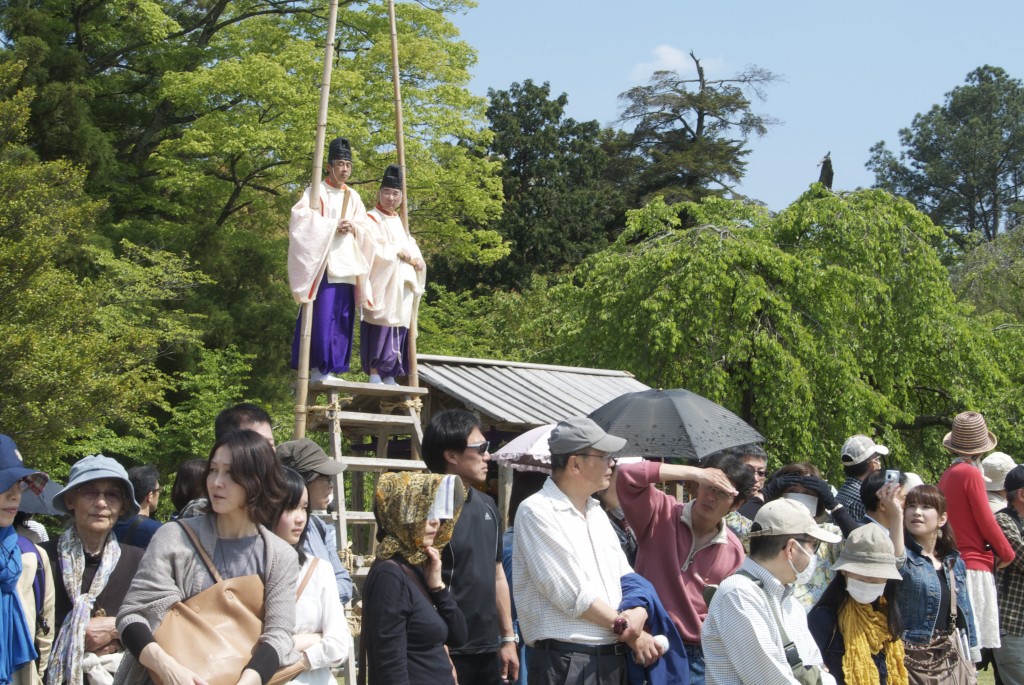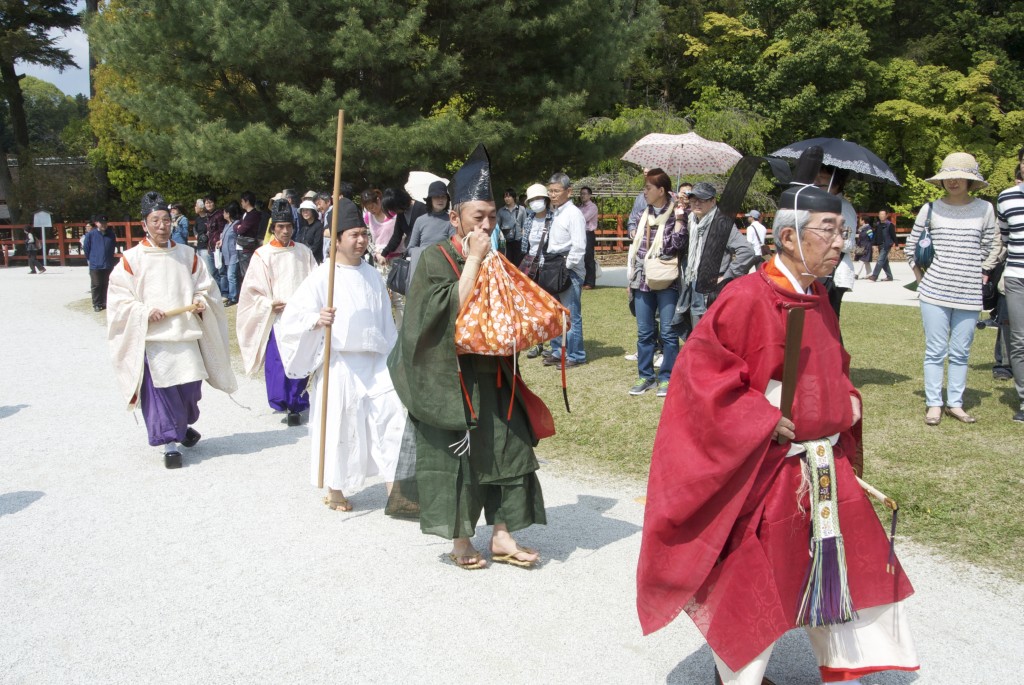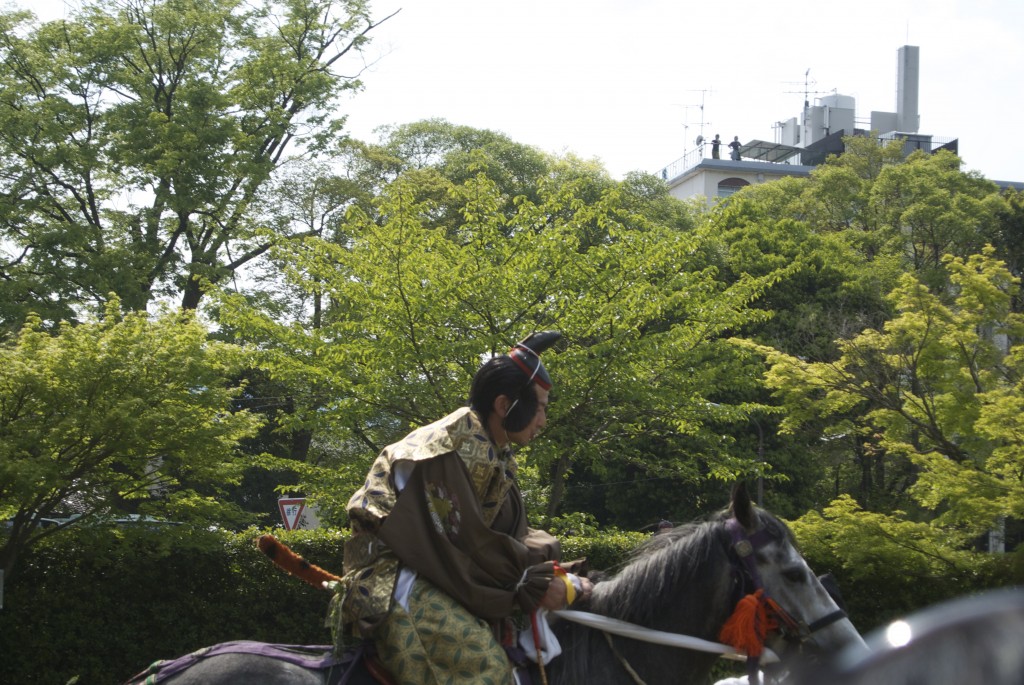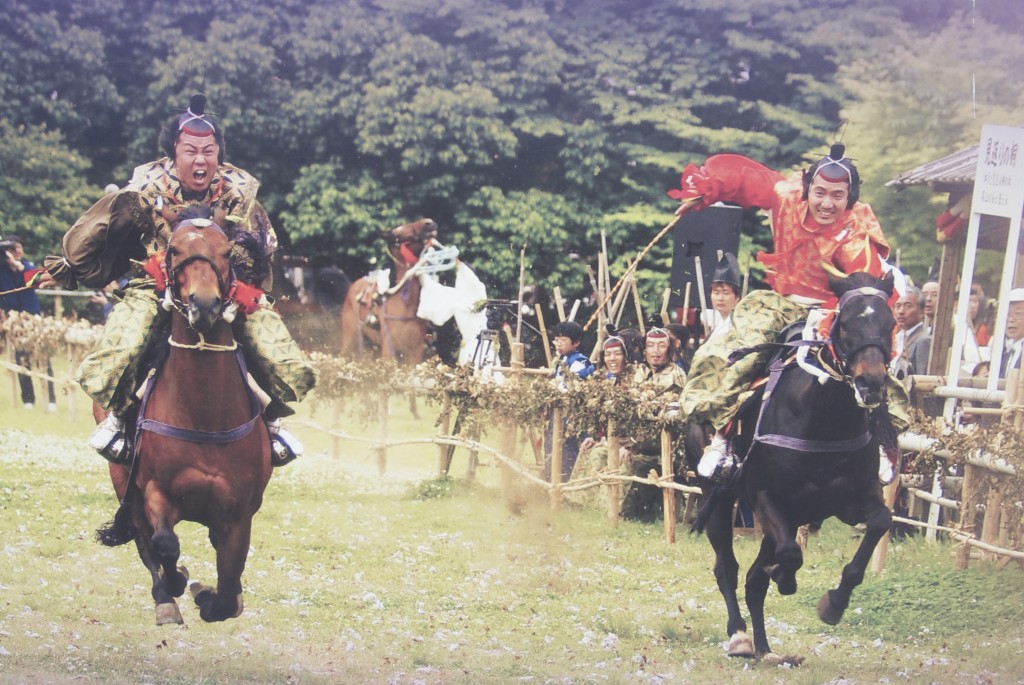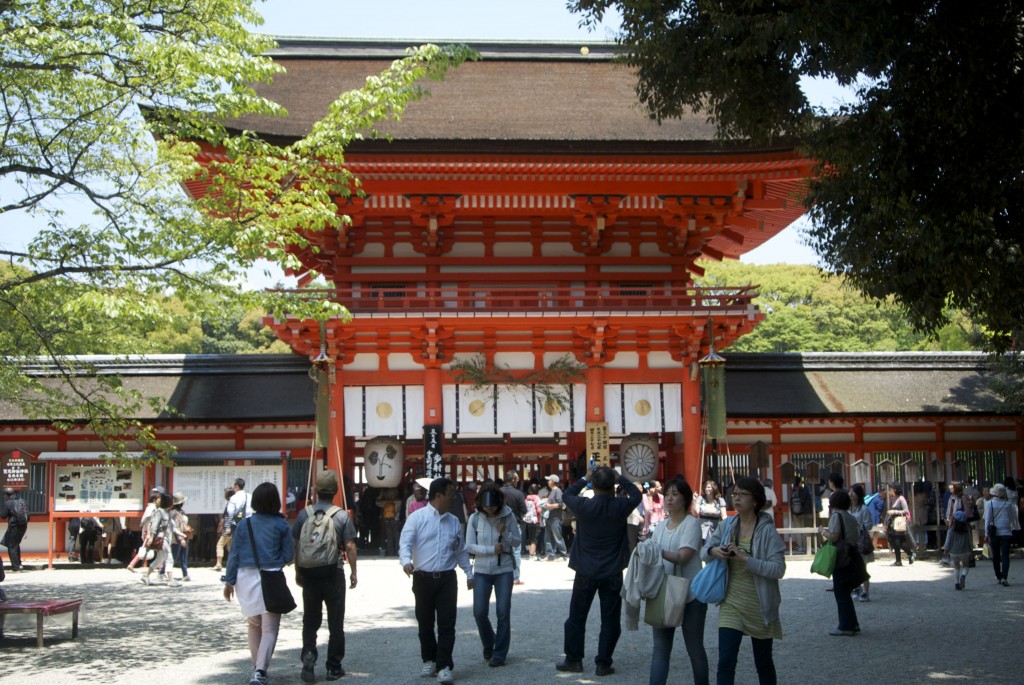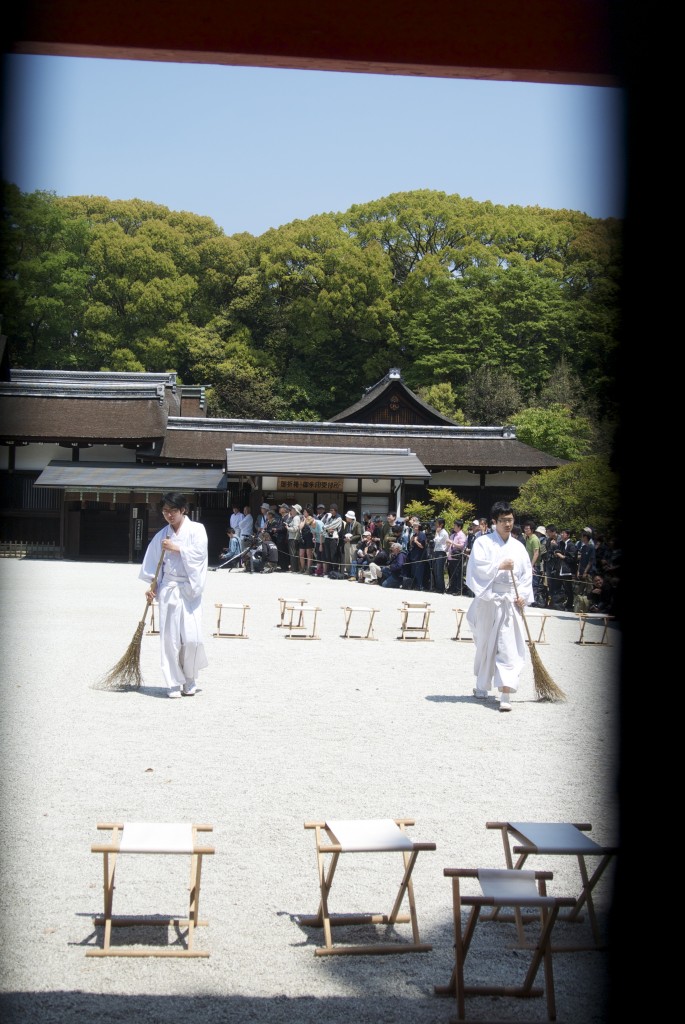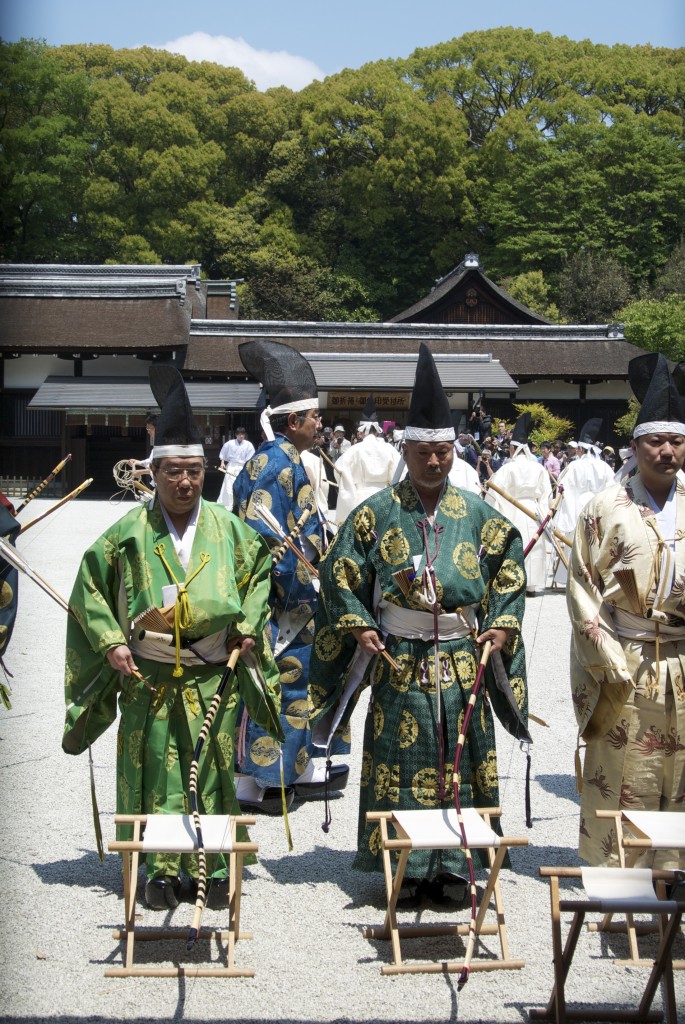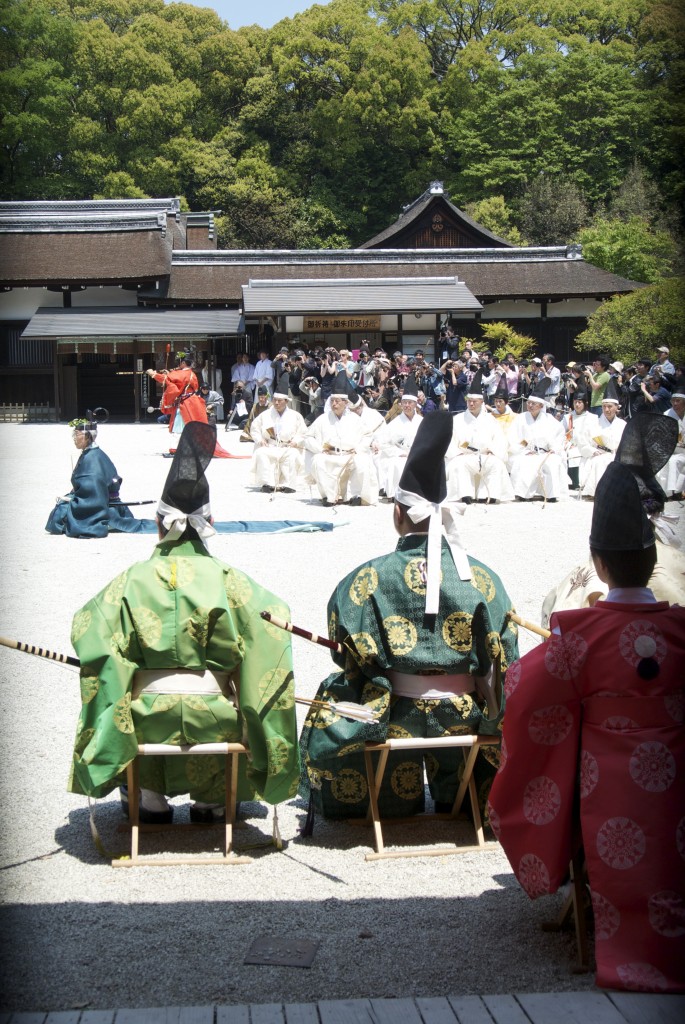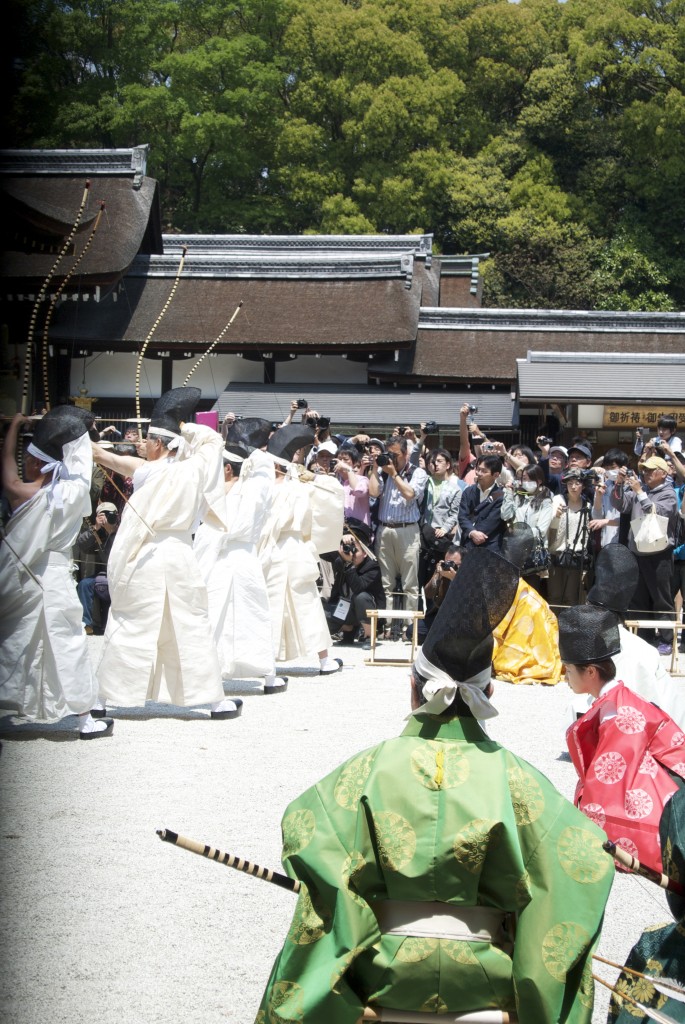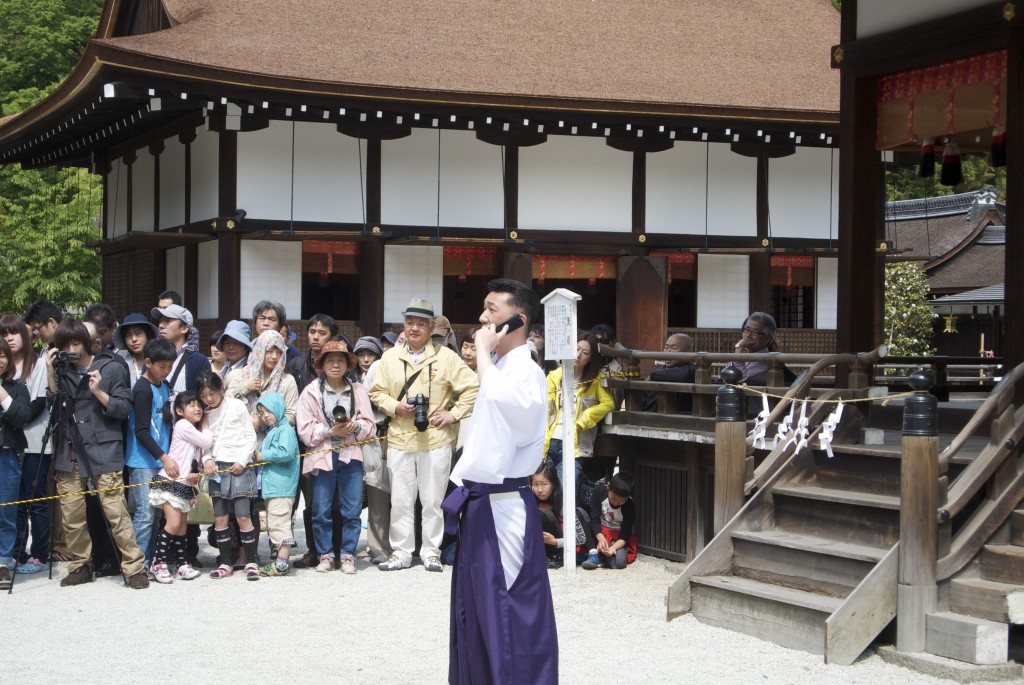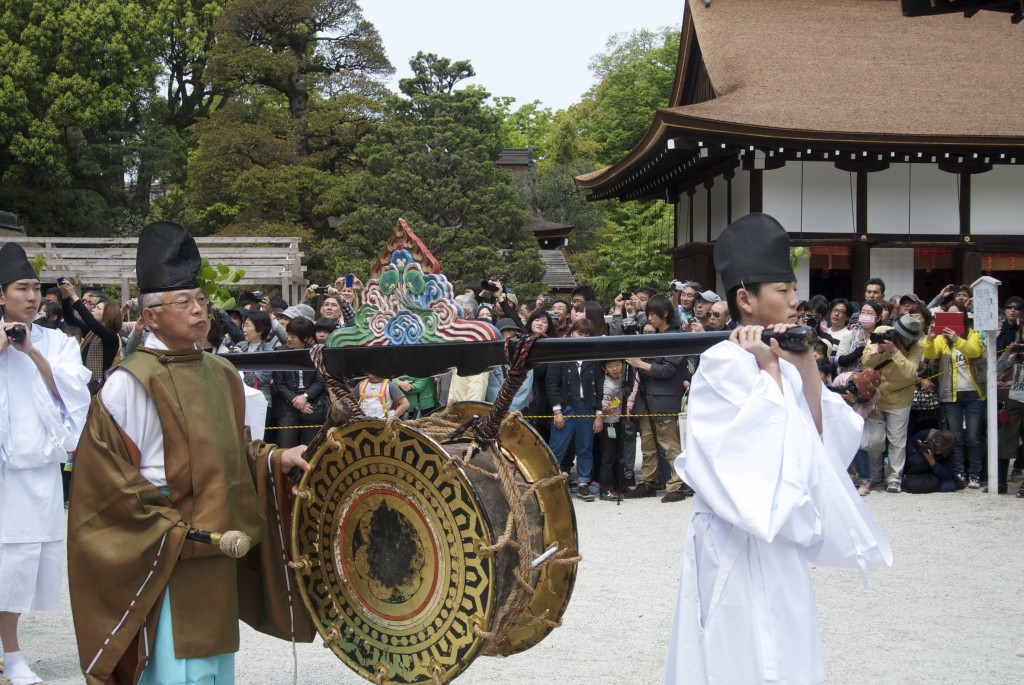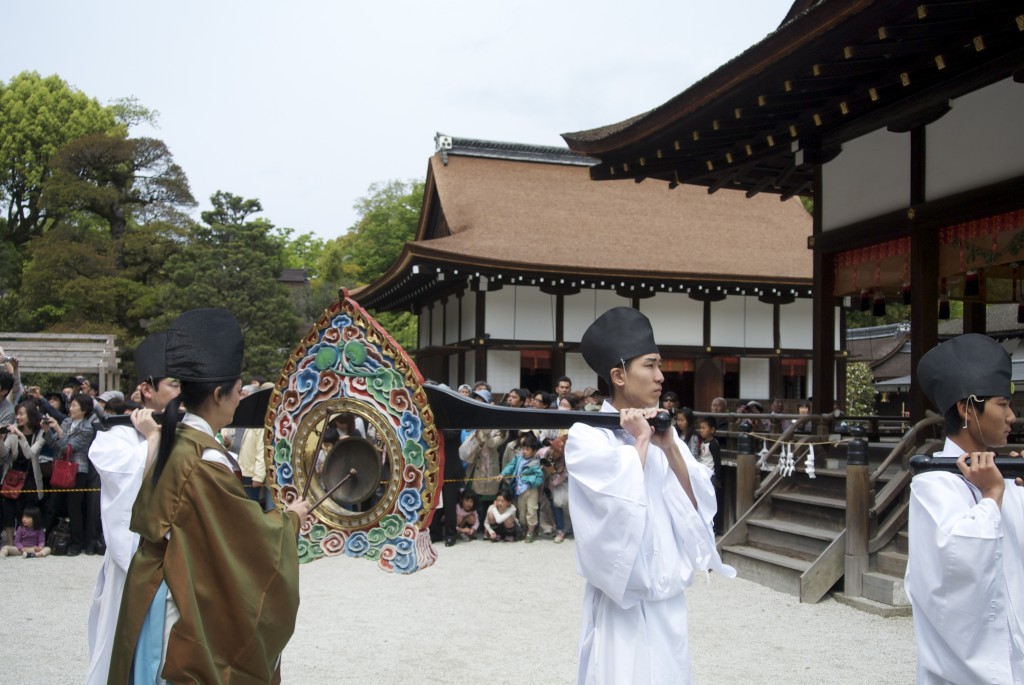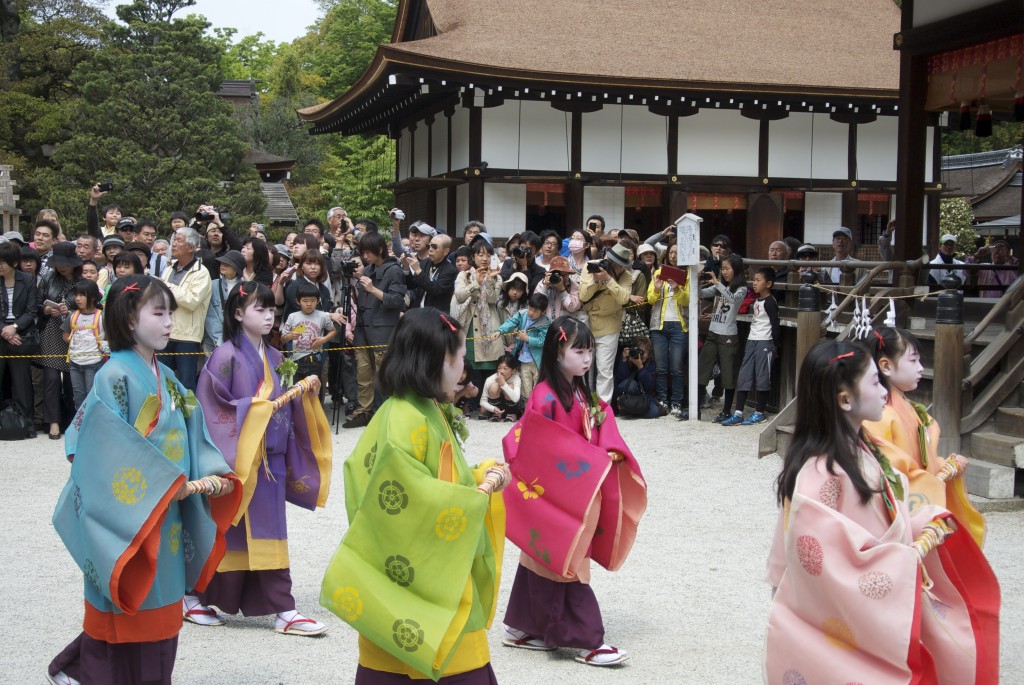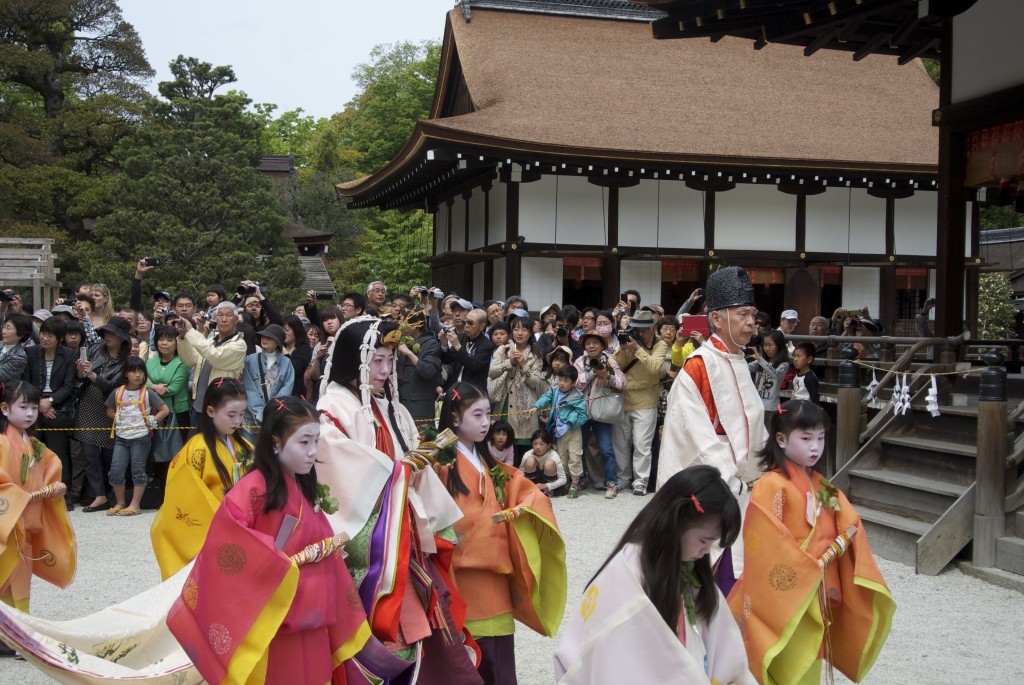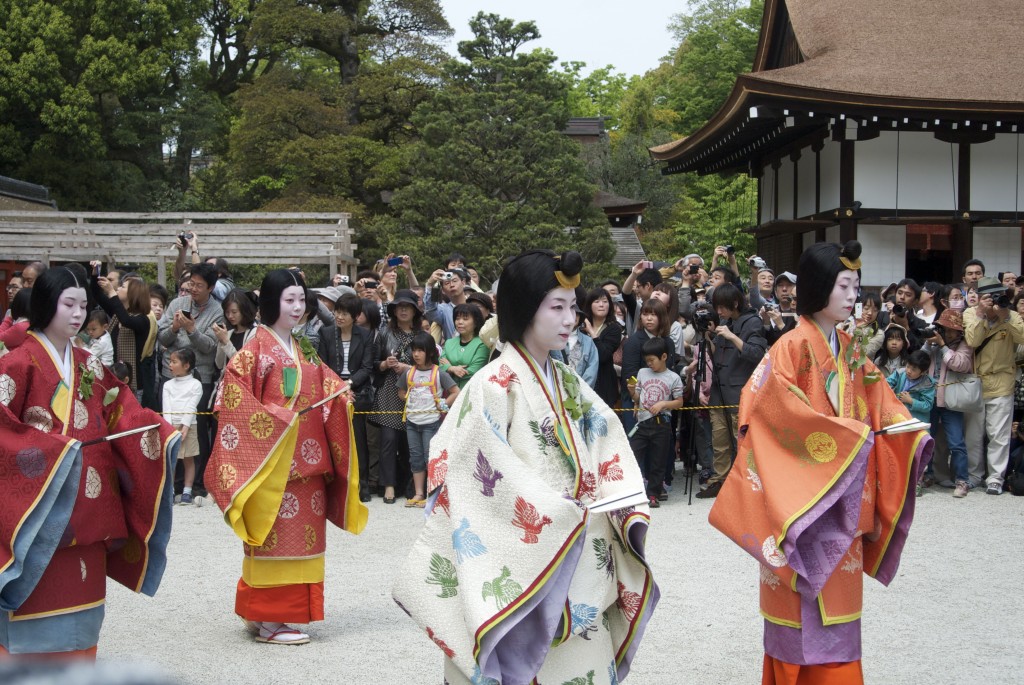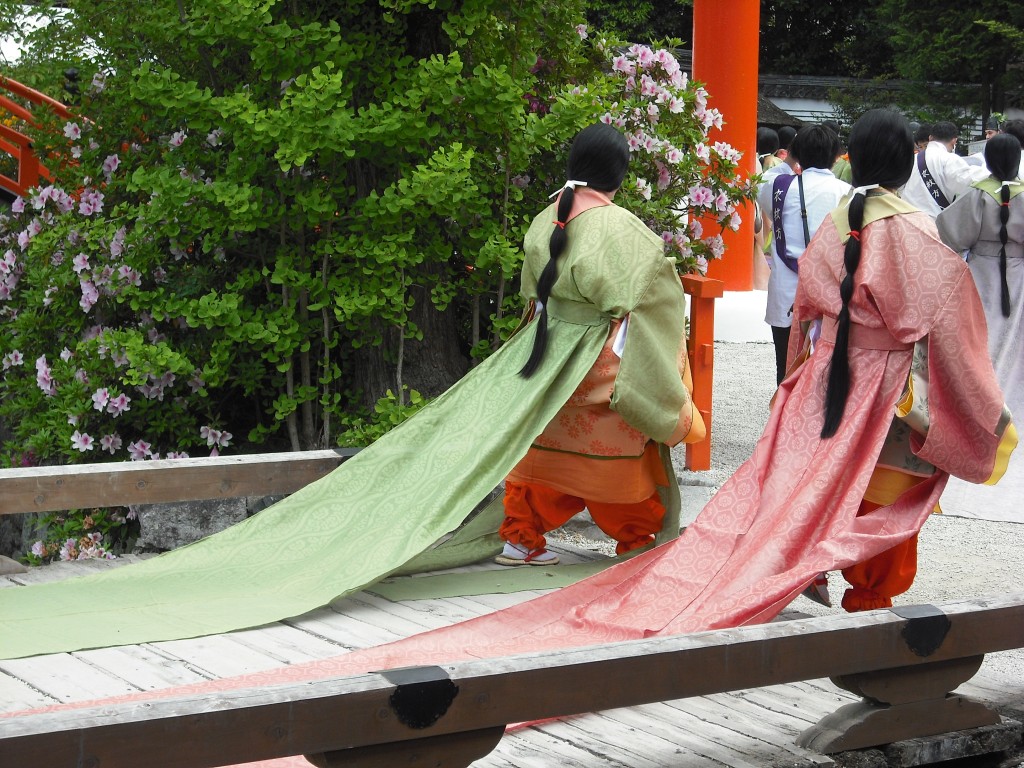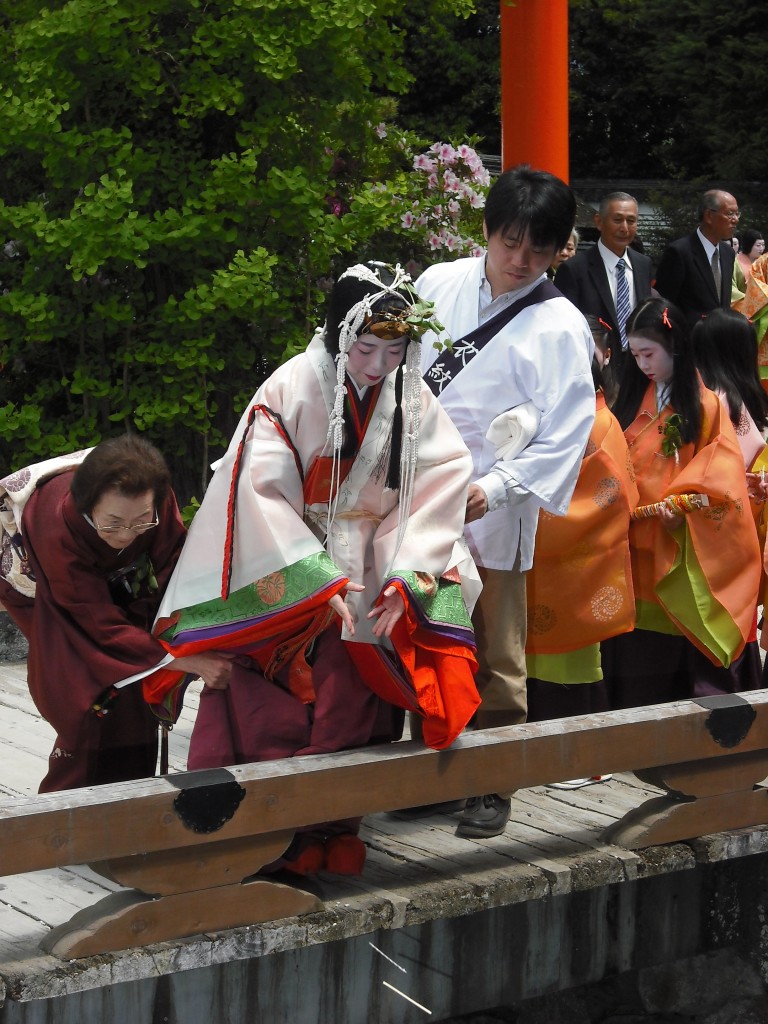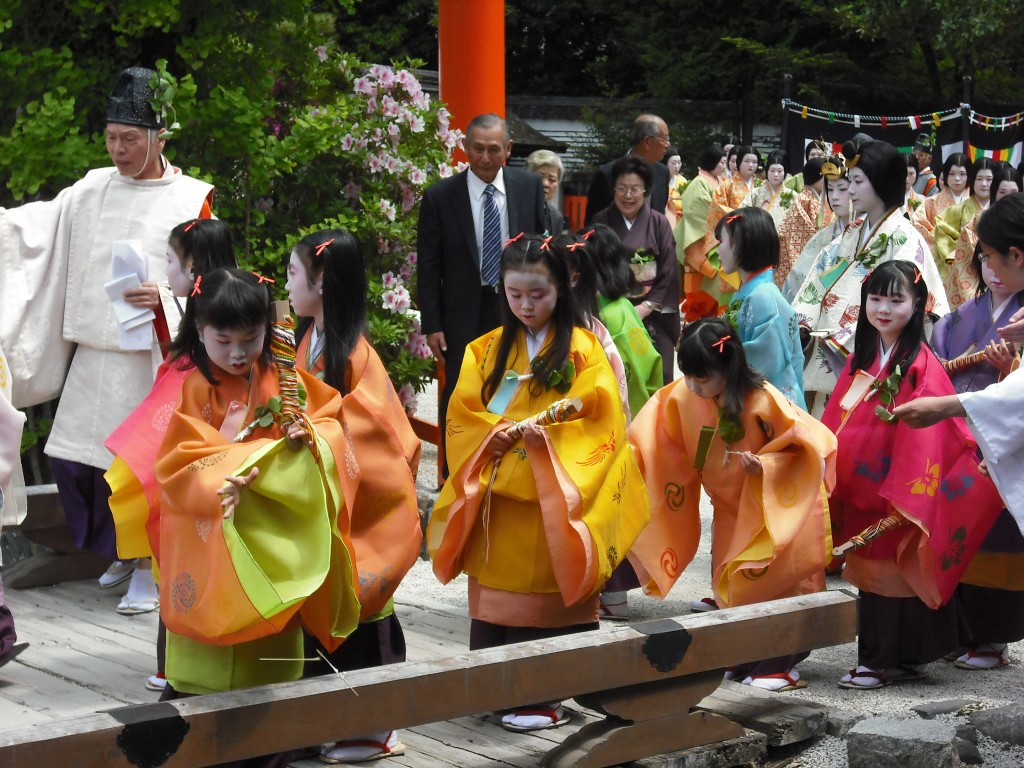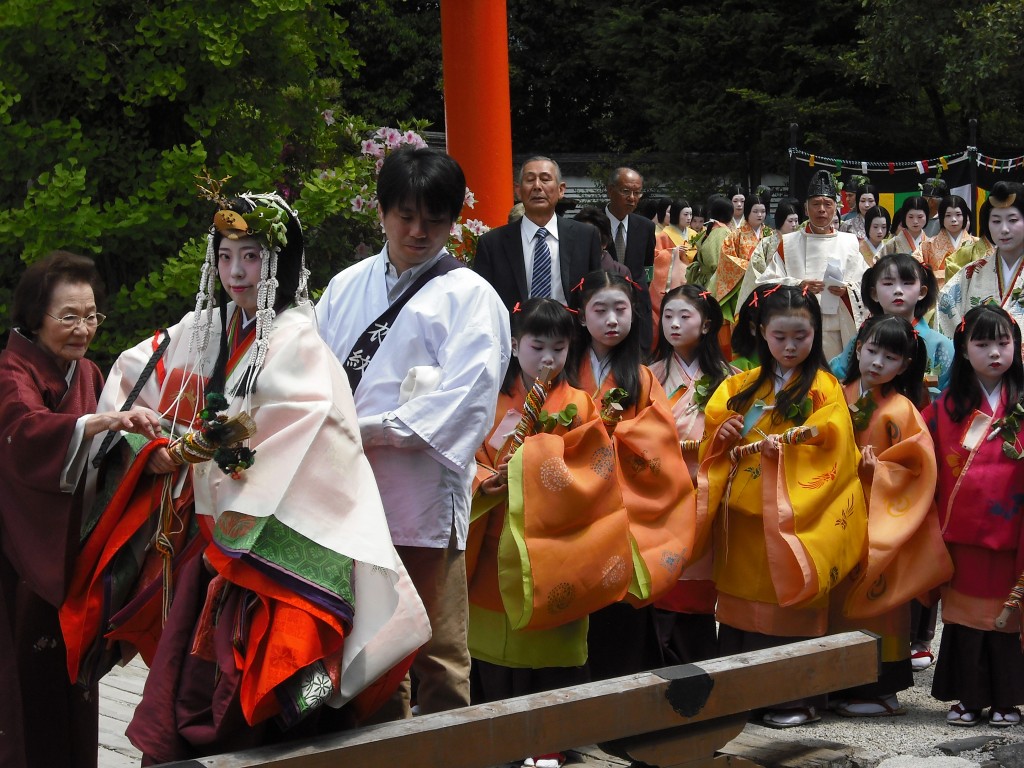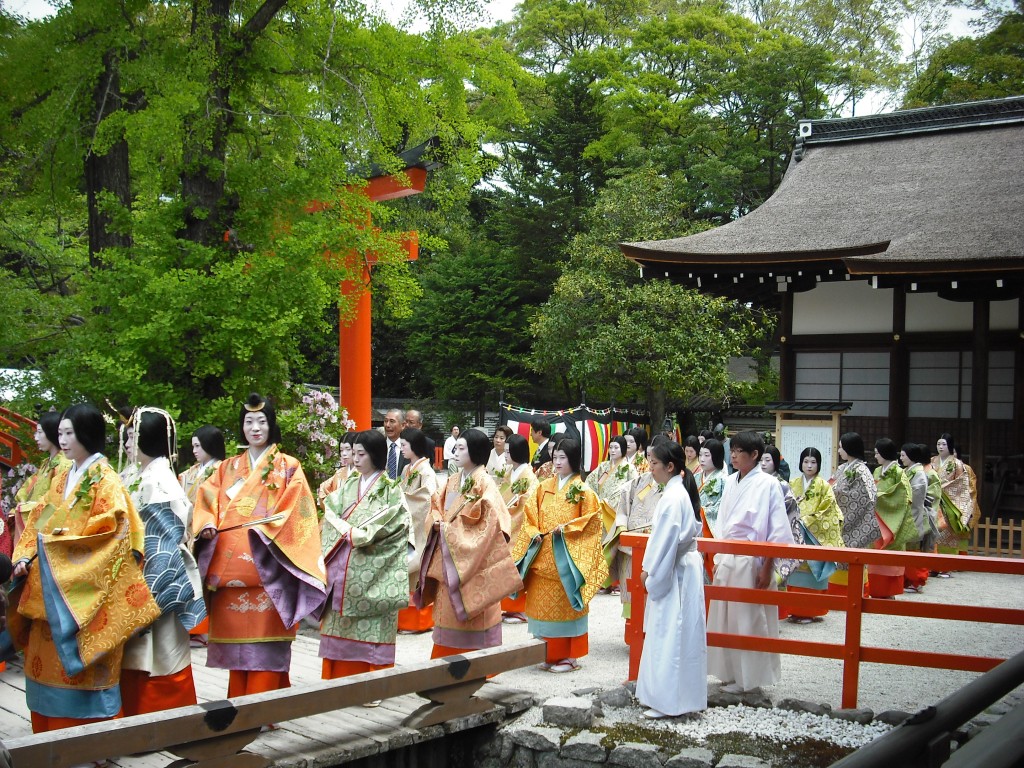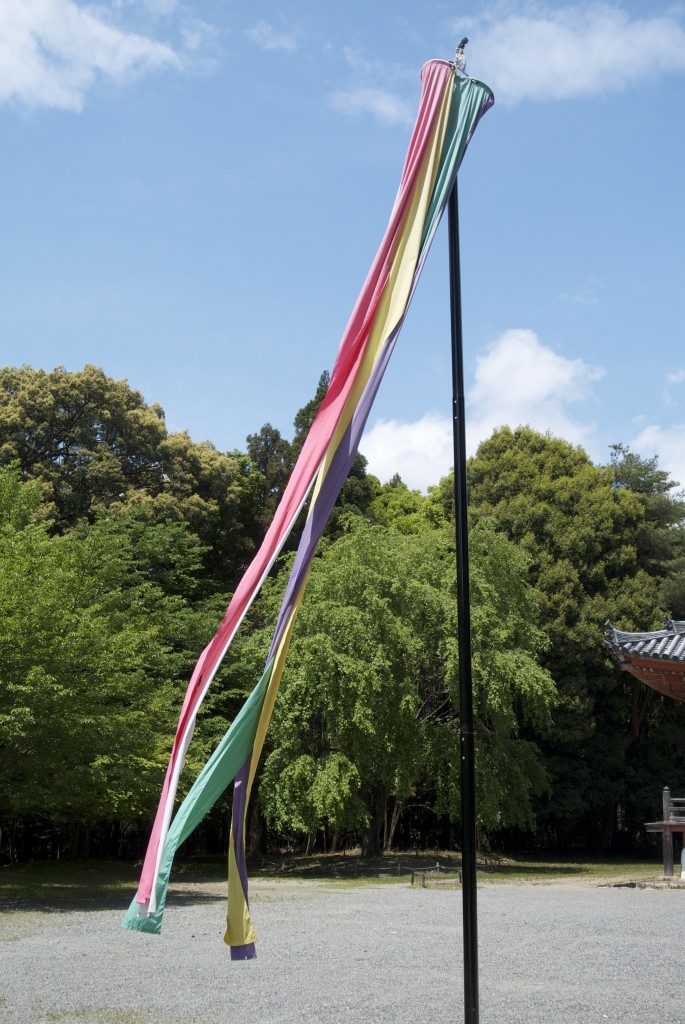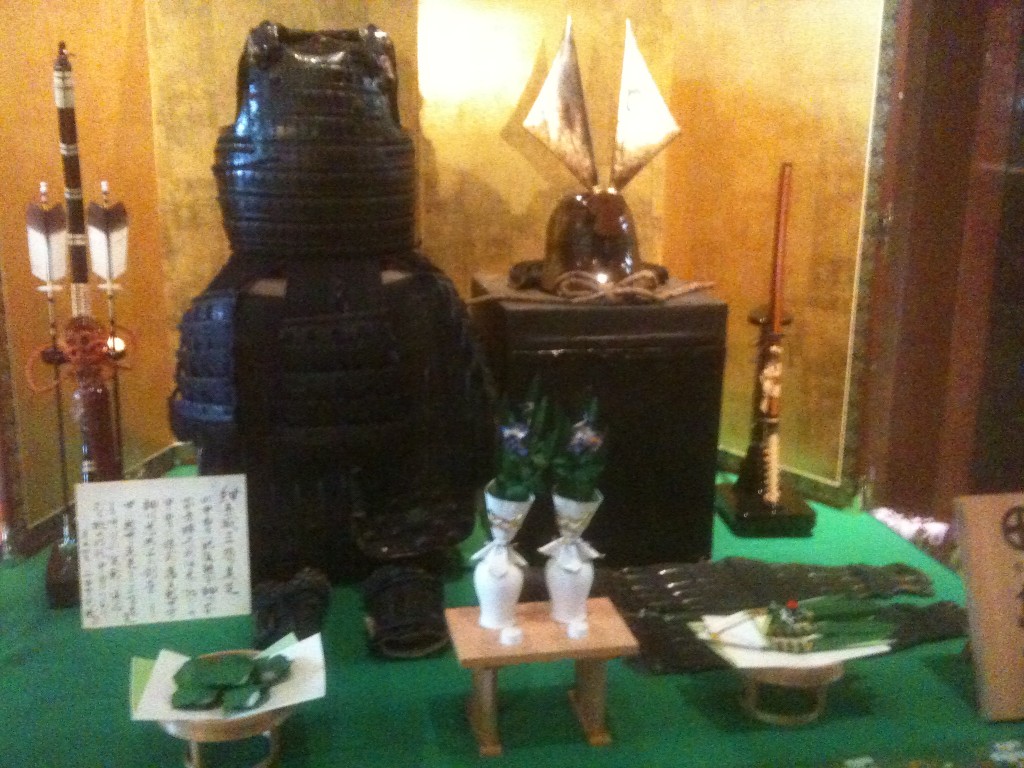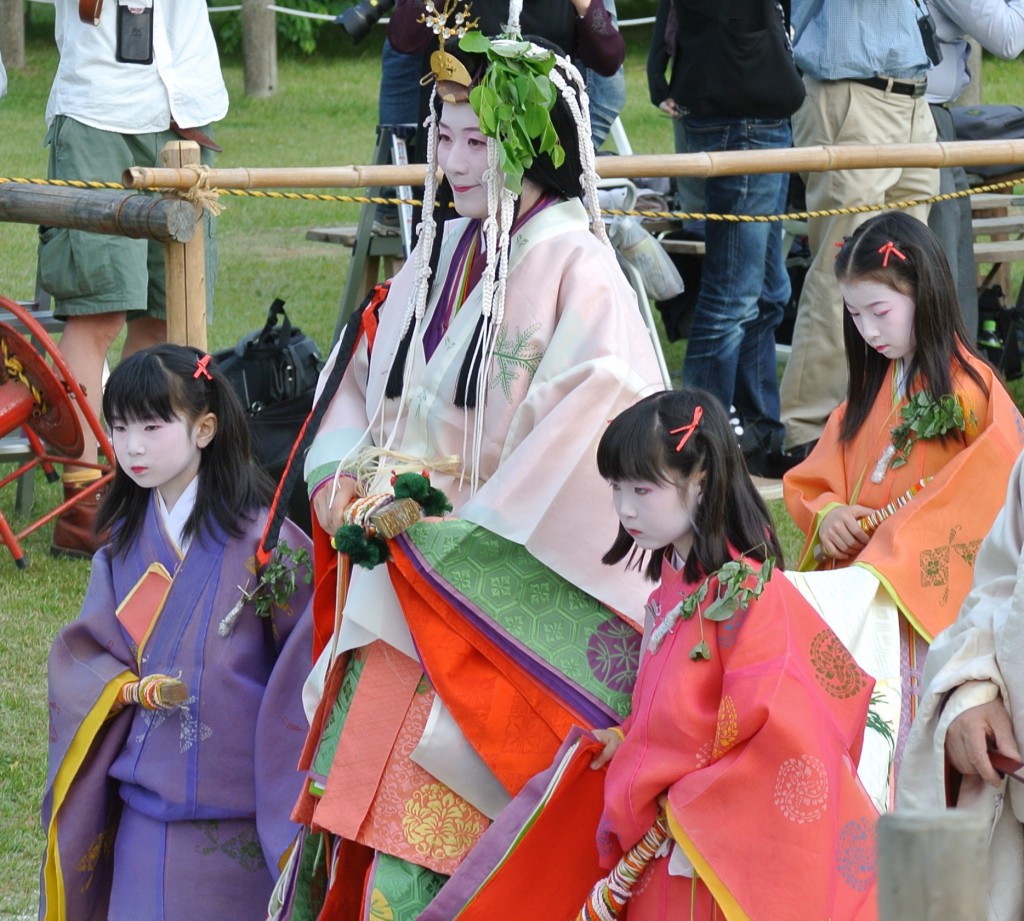
The Saio-dai arrives at Kamigamo Jinja with her retinue
On May 15 the oldest of Kyoto’s Big Three Festivals takes place. The Aoi Matsuri is the city’s big spring event; the Gion Matsuri is the summer bonanza; and the Jidai Matsuri is the autumnal offering. In winter we take a break to enjoy Oshogatsu (New Year festivities).
Over 500 participants in Heian era costume; 36 horses; 2 ox-carriages – the Aoi procession starts off from the Former Imperial Palace around 10.30, and the stately progress means that it takes an hour to travel the short distance to Shimogamo Shrine.
The procession stretches out to be half a mile long, and consists of horseback warriors, foot warriors, courtiers, lower-rank guards, higher-rank guards, halberb bearers and dignitaries. At Shimogamo dances are performed for the kami and the imperial messenger delivers greetings. Around 2.20 the procession sets off for Kamigamo Jinja where it arrives around 4.30 and rituals are again performed.
In medieval times there were two processions, one for the imperial messenger proceeding from the Imperial Palace and the other for the Saiin (an unmarried female related to the emperor appointed to the shrines). Between 810 and the early thirteenth century, when the practice fell into abeyance, there were 35 such priestesses who lived in palaces somewhere between the two Kamo shrines.
In former times the procession of the Saiin would meet up with that of the imperial messenger, and they would proceed together to the shrines. Nowadays everyone sets off from Gosho (Former Imperial Palace), and the role of the Saiin is taken by an unmarried young female from a well-bred local family, who is known as the Saio-dai.
Last year I attended the beginning and end of the parade, and the photos below are the kind of thing you can expect to see next Wednesday. The weather forecast predicts sunshine with occasional cloud, and a nice warm 24 degrees. See you there!
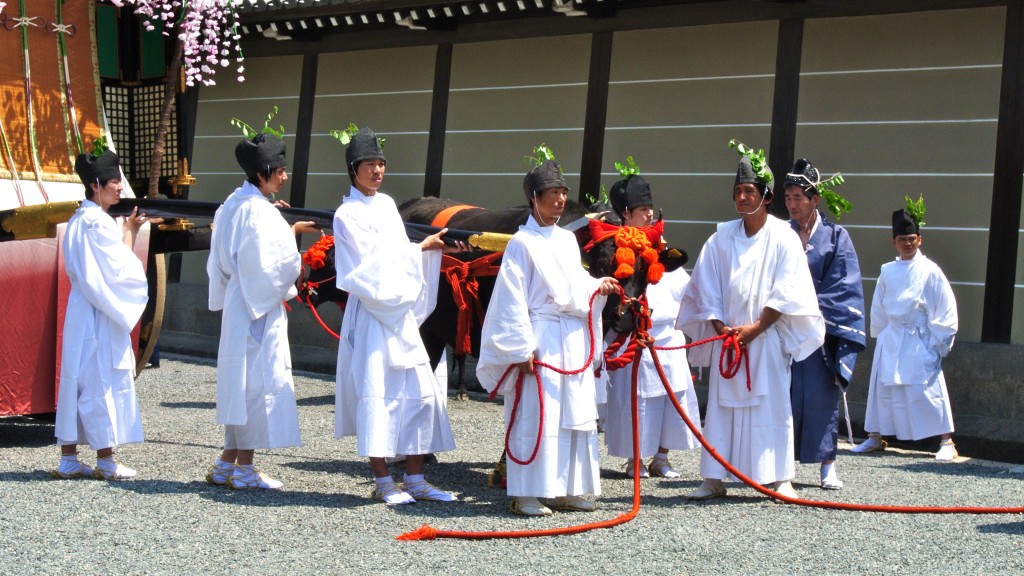
The procession gets ready for departure outside the Former Imperial Palace. Here the ox-cart team wear hats adorned with hollyhock leaves.
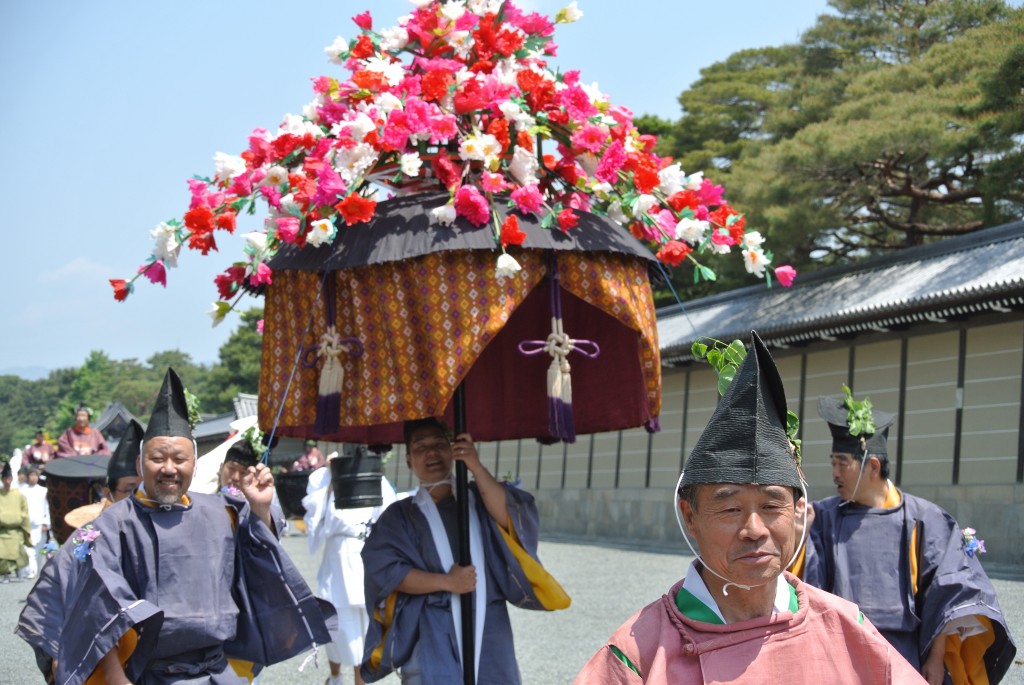
The costumes are colourful, and so are some of the decorations borne by participants who are clearly enjoying the occasion. Will they still be smiling at 4.30 after the long walk to Kamigamo?
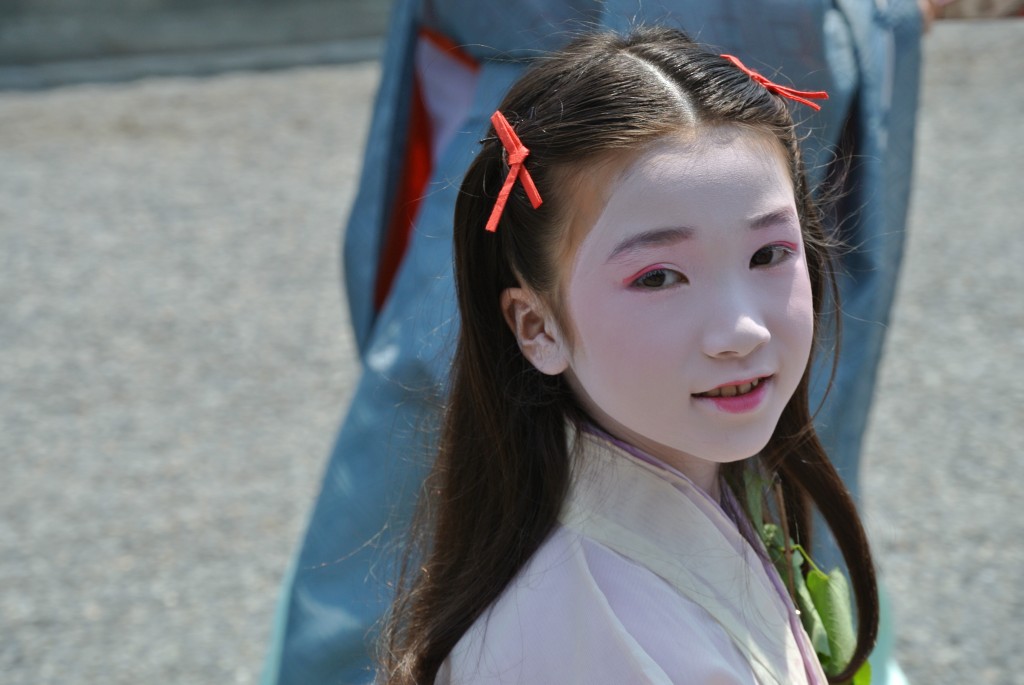
Star in the making? A child attendant of the Saio-dai

Some with high status get to ride on horseback
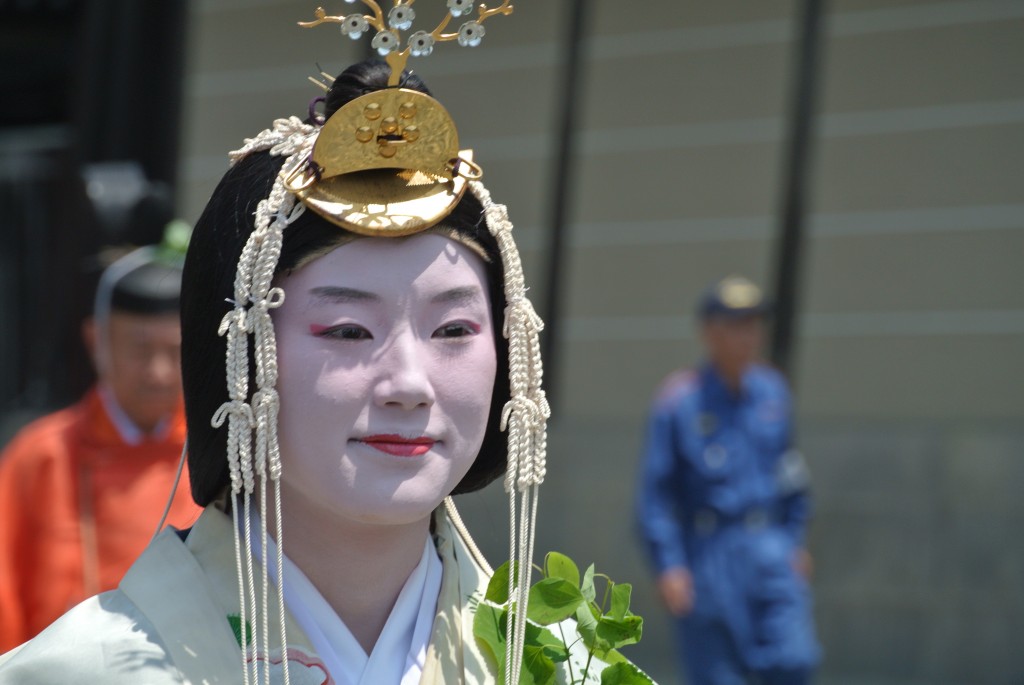
Saio-dai complete with a head-dress that may reflect that of shamanic-queens of prehistory

